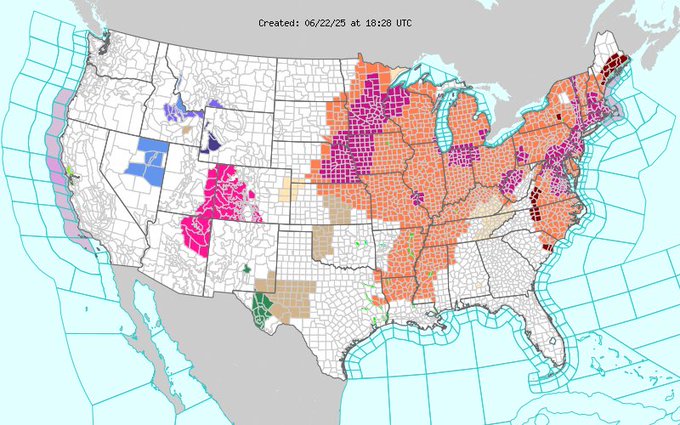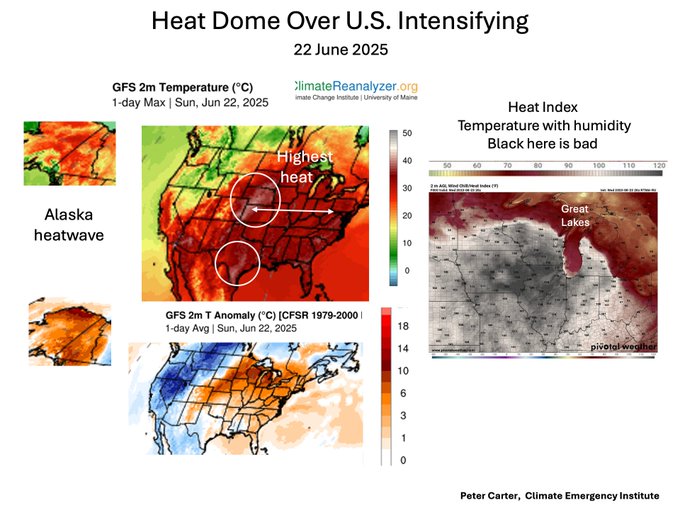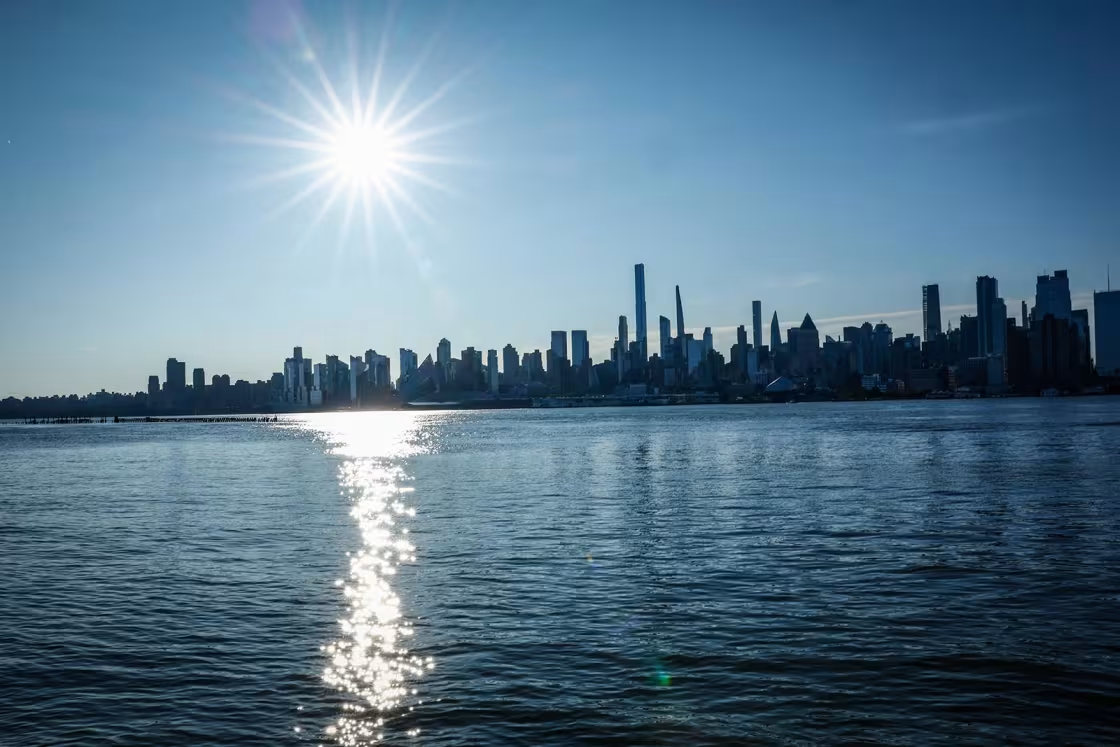The eastern half of the United States is currently enduring one of the most severe and widespread heat waves in recent memory, as a powerful heat dome has settled over the region. This early-season event, stretching from the Midwest to New England and down through the Mid-Atlantic, is shattering temperature records, prompting widespread health warnings, and forcing communities to take emergency measures to protect vulnerable populations.

The Scope and Severity of the Heat Wave
This heat wave is affecting a vast swath of the country, with more than 170 million Americans experiencing temperatures at or above 90°F (32°C). Major cities along the Interstate 95 corridor—including Washington, D.C., Philadelphia, and New York City—are flirting with or surpassing the 100°F (38°C) mark, while humidity levels are sending heat indices well above 105°F (41°C). In some places, the combination of high temperatures and oppressive humidity is making conditions feel even more unbearable, with little relief even at night as overnight lows remain 15°F to 20°F above average.

The National Weather Service has issued heat advisories and warnings for at least 147 million people across 28 states, with the risk level for heat-related illness rated as “extreme” in many areas. Cities such as Chicago, Cleveland, Louisville, Nashville, and Raleigh are all experiencing heat indices that make it feel well above 100°F, while Minneapolis recently broke century-old temperature records. In the Northeast, cities like Boston, New York, and Philadelphia are expected to see highs near or above 100°F, with Philadelphia poised to break daily high records for multiple consecutive days.
Emergency Measures and Public Health Concerns
The relentless heat has prompted states and cities to declare emergencies, close schools early, and activate heat health protocols. In New York, Governor Kathy Hochul declared a state of emergency across 32 counties, while Philadelphia’s Department of Public Health declared a heat health emergency, urging residents to check on one another and seek cooling centers. School districts in upstate New York and other regions have shifted to half-day schedules to minimize the risk of heat-related illnesses among students and staff.
Health officials are warning that the risk of heat exhaustion and heatstroke is significantly elevated, particularly for children, the elderly, and those with pre-existing health conditions. The New York City Emergency Management office emphasized the gravity of the situation, noting that over 500 residents die prematurely each year from heat-related causes, and urging the public not to wait until symptoms appear before taking precautions.

The Meteorology Behind the Heat: The “Heat Dome”
At the heart of this extreme weather event is a phenomenon known as a heat dome—a large, persistent area of high pressure in the upper atmosphere that traps heat and humidity at the surface. This heat dome is causing the sun’s energy to bake the ground and air, suppressing cloud formation and preventing the usual nighttime cooling. As a result, cities are experiencing not only record-breaking daytime highs but also unusually warm nights, which can be particularly dangerous as the body has less opportunity to recover from the heat.
Meteorologists note that this heat wave is both unusually intense and unusually early for the season, with temperatures running 15 to 25 degrees above the historical average in some areas. The National Weather Service has described the event as “the most perilous weather threat” currently facing cities like New York, and has warned that the extreme heat risk will persist through at least Wednesday, June 25, 2025.
The Role of Climate Change
Climate scientists are underscoring the role of human-caused climate change in the increasing frequency and intensity of heat waves like this one. According to a Climate Central analysis, this particular event was made at least three times more likely by climate change, with nearly half of the US population experiencing at least one day of extreme, climate-driven heat during this period. Nighttime temperatures are warming faster than daytime highs, further compounding the risks associated with prolonged heat waves.
Looking Ahead
While temperatures are expected to gradually moderate later in the week, forecasters warn that this event may be a preview of what’s to come, as the hottest days of summer typically occur in July or August. The Climate Prediction Center projects a hotter-than-average summer for the entire continental US, suggesting that communities should be prepared for continued extreme heat events in the months ahead.

Staying Safe
Authorities recommend minimizing outdoor activities, staying hydrated, seeking air-conditioned spaces, and checking on vulnerable neighbors and family members during periods of extreme heat. With heat remaining the deadliest form of extreme weather in the US, proactive measures are essential to prevent illness and save lives.
In conclusion, the current heat wave gripping the eastern United States is a stark reminder of the growing risks posed by extreme weather and the urgent need for preparedness and adaptation in a warming world.

